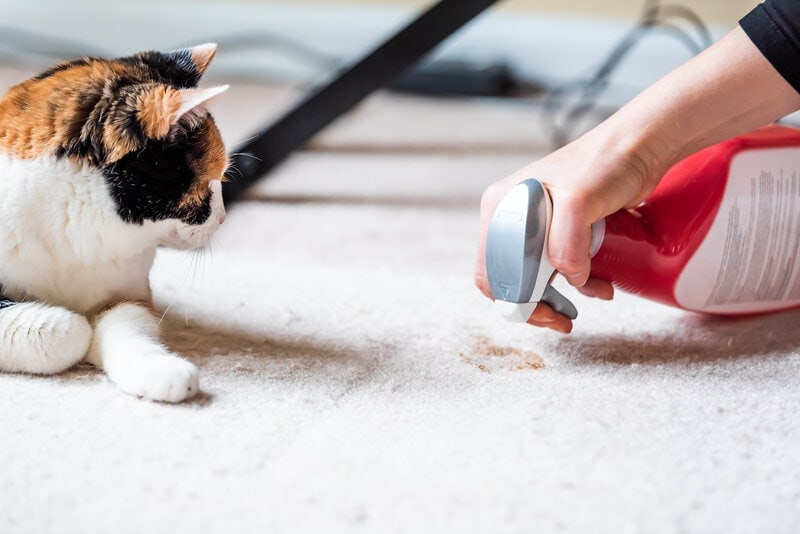Humans have a sweet tooth—and sharing sweets is one way we show love. So if you’re eating a lollipop and your kitty comes sniffing around, you might be tempted to share—but that’s probably not a good idea. Hard candies like lollipops are usually made of sweeteners like sugar, water, flavorings, and food colorings. It’s hard to know what specific chemicals are used to get your lollipop’s flavor and what effect it will have on your cat’s health. Even if there are no dangerous chemicals in your lollipop, sugar isn’t very good for your cat. Your cat probably won’t like sweets anyway. Cats are carnivores that aren’t built to eat carbs, so they don’t taste sweets the same way that humans do.
But If Cats Don’t Like Sugar, Why Is Mine Interested?
If your cat is getting into your sweets, it probably isn’t the sugar she’s after! Some cats are fascinated by things their humans eat and want to be in the middle of things. If you’re eating a lollipop and your cat wants a lick, she’s probably just curious. Cats might also be attracted to the sound of crinkling wrappers or the smell of certain additives.
Possible Hazards in Lollipops
Sugar
The most common ingredient in lollipops is sugar. Sugar isn’t generally toxic to cats, although they can’t taste sweetness the way that humans can. But sugar—especially the highly processed sugars found in candy—can lead to other issues. Just like in humans, eating sugary foods can lead to a higher rate of dental issues. Around 70% of cats have dental diseases by the age of 3, and a poor diet increases that risk. There’s also conjecture that carb-heavy diets cause feline diabetes, although there aren’t any studies on sugar and diabetes in cats.
Xylitol
A more dangerous ingredient in many sweets is Xylitol. For humans, Xylitol is a sweet, low-carb compound used to make sugar-free foods, including candies. But for cats, Xylitol can cause severe symptoms including seizures, liver failure, and comas. If you think your cat may have ingested Xylitol, contact a vet immediately.
Flavorings and Colorings
The biggest wild cards in a lollipop are the flavorings and colorings. Most lollipops use artificial flavors and colors, and these haven’t been tested on animals. Because of this, any ingestion of human candies could be dangerous. Monitor your cat closely for signs of poisoning and be ready to take your cat to a vet.
Choking Hazards
Even if the lollipop itself is safe to eat, its wrapper isn’t. Plastic or paper wrappers can be a choking hazard for cats. Your cat might suffocate trying to play with the wrapper, and if she successfully eats it, it might cause an obstruction in her stomach. Lollipop sticks can also be a choking hazard for cats.
What to Do If a Cat Eats Hard Candy

If your cat eats hard candy, the most important thing to do is monitor your cat for symptoms of poisoning. It’s hard to know what chemicals are in a hard candy that your cat might react to. Symptoms of minor reactions include diarrhea and vomiting—if your cat has one bout of vomiting and diarrhea and then appears to recover you probably don’t need to go to the vet. More serious symptoms, like tremors, seizures, blood in vomit or urine, or labored breathing require vet attention immediately.

The Best Treats for Sharing
So, if you can’t share sweets with your cat, what can you share? The best treats for cats are similar to the things they eat in the wild. Most cooked lean meat is safe for cats and humans to share. Cooked eggs and low-lactose dairy products like hard cheeses are good in small amounts too. Avoid highly salty or fatty foods and look for high protein foods. And remember, a treat is only healthy when it stays a treat—for regular meals, your cat should be having formulated cat food.
Featured Image Credit: Skitterphoto, Pixabay







